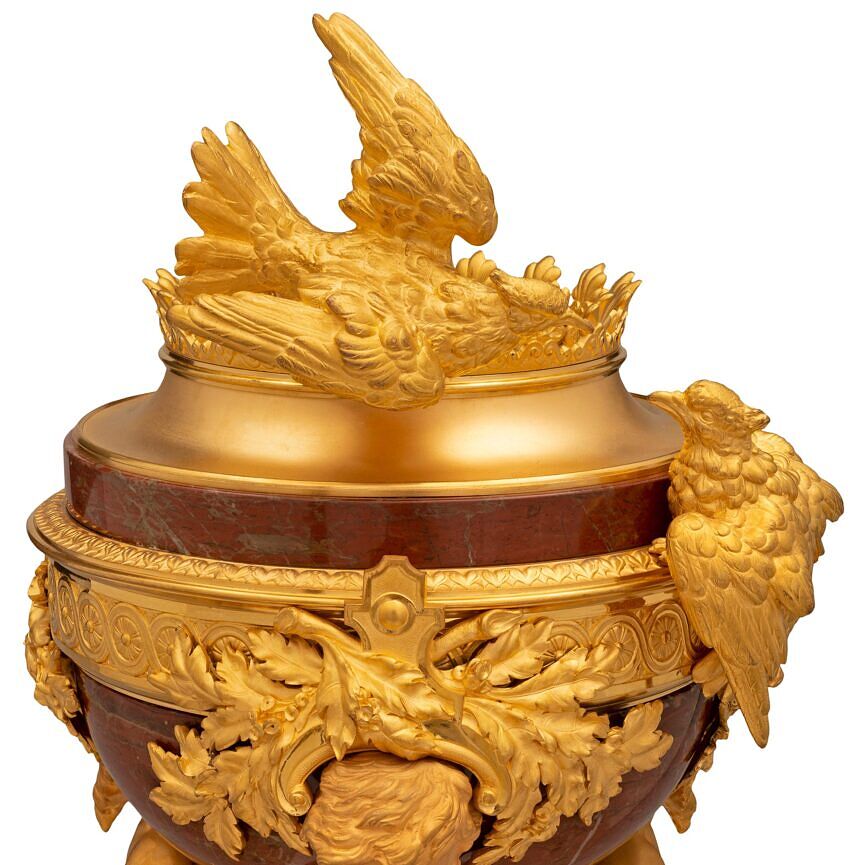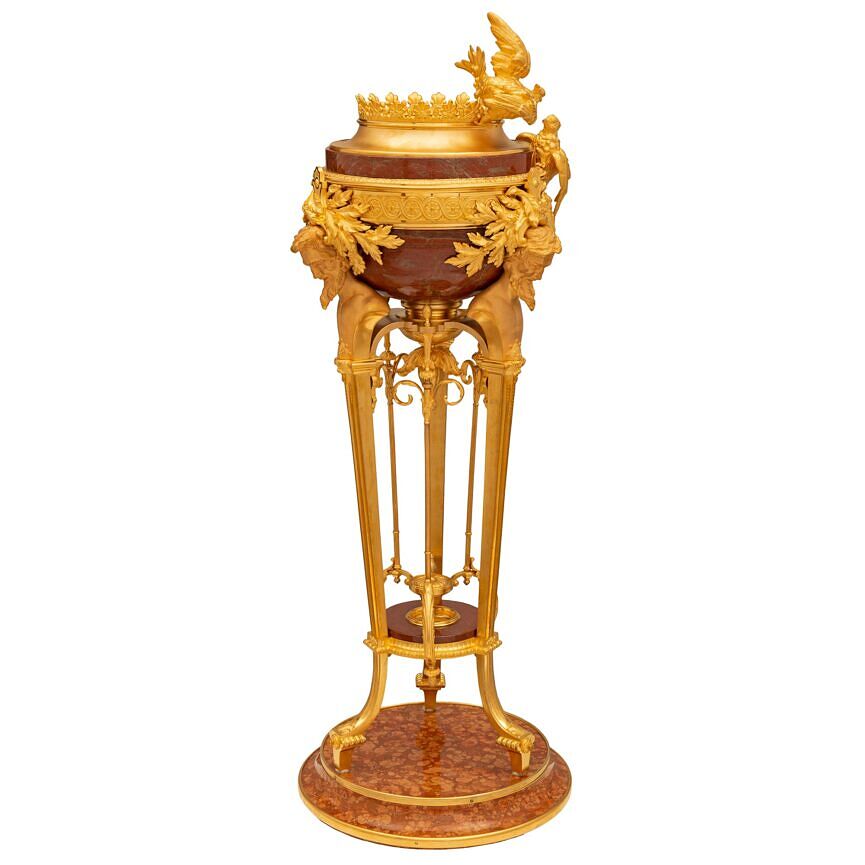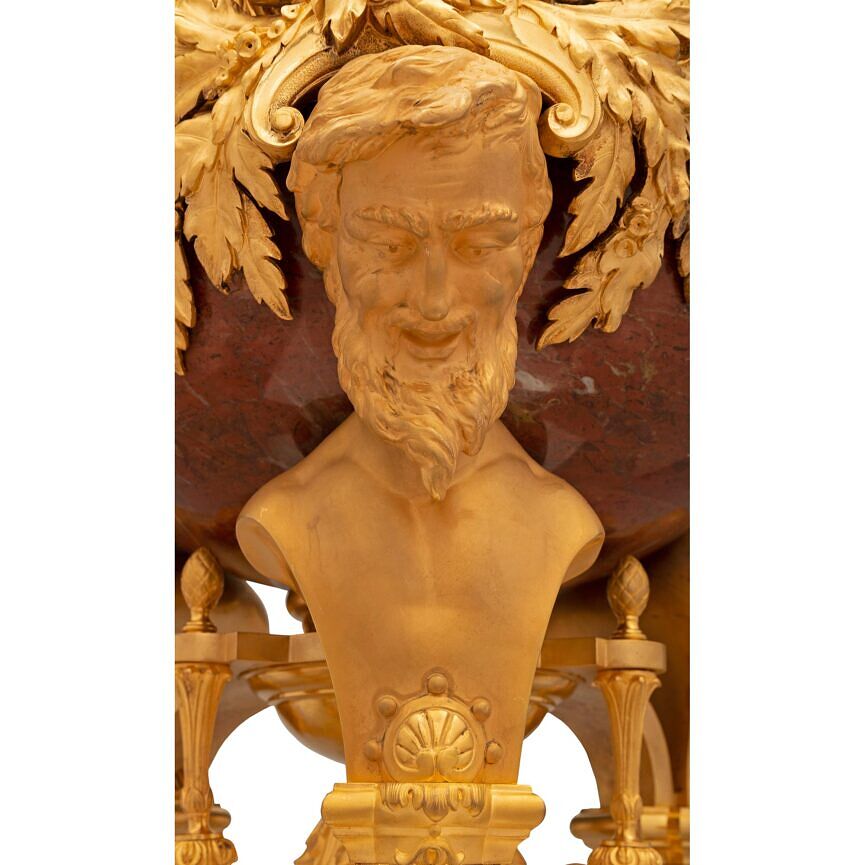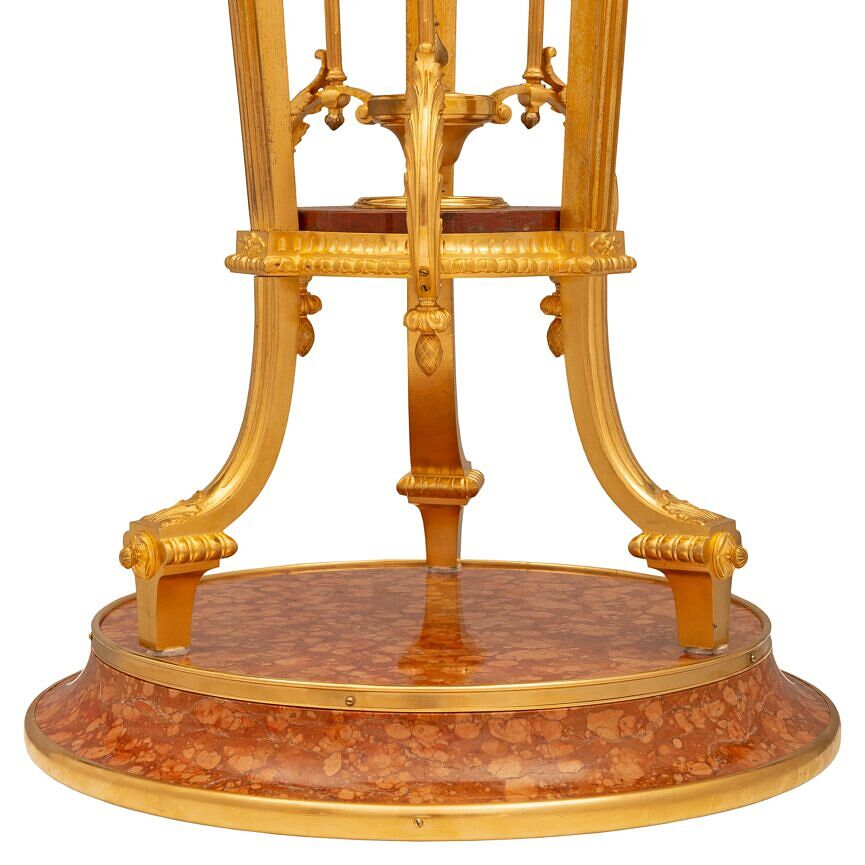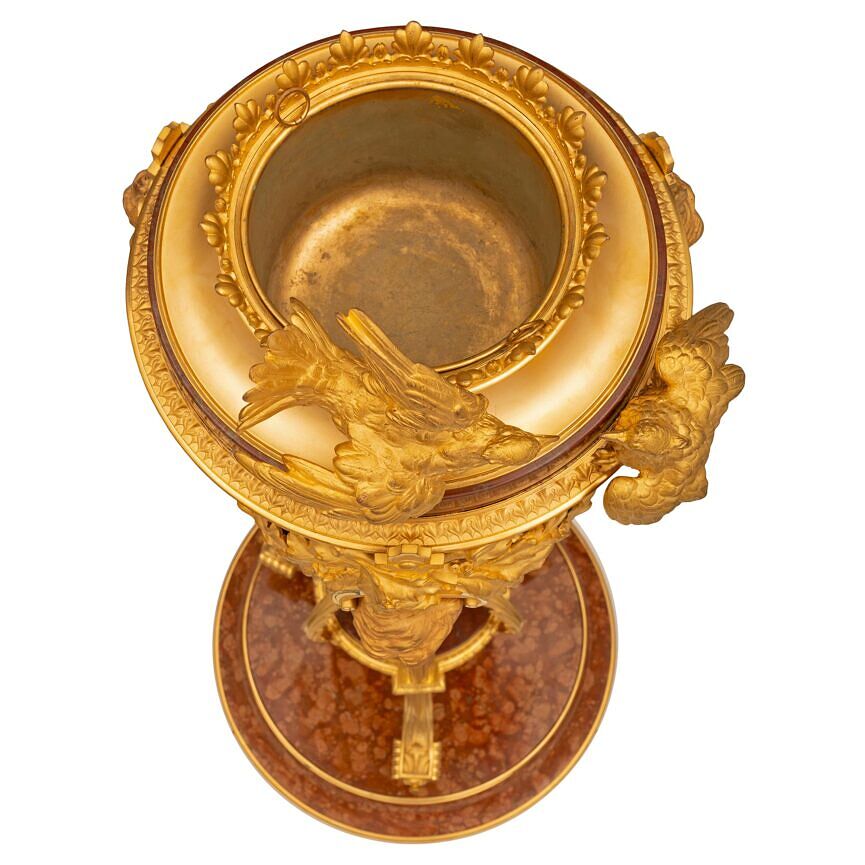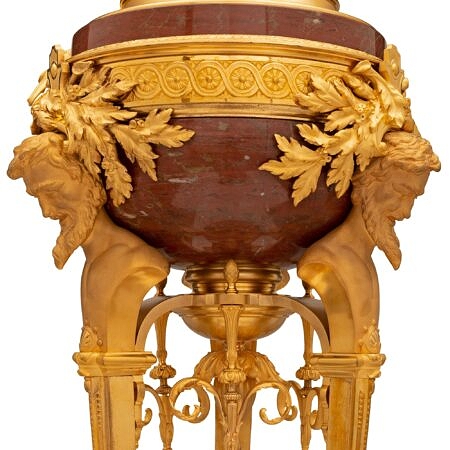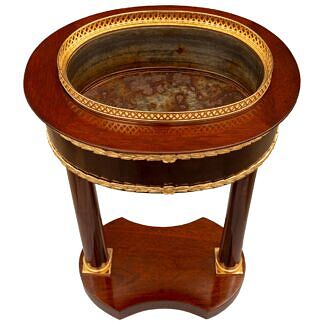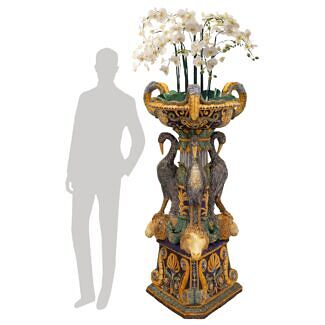A French 19th century Louis XVI st. Belle Époque period ormolu, Rouge Antique and Rouge de Verone marble planter stand inspired by a model by Gouthière
Sorry, This item has sold
A sensational and extremely high quality French 19th century Louis XVI st. Belle Époque period ormolu, Rouge Antique and Rouge de Verone marble planter stand inspired by a model by Gouthière. The most impressive planter is raised by a circular... — Read More
A sensational and extremely high quality French 19th century Louis XVI st. Belle Époque period ormolu, Rouge Antique and Rouge de Verone marble planter stand inspired by a model by Gouthière. The most impressive planter is raised by a circular Rouge de Verone marble base with an elegant mottled border and wrap around ormolu band. Three elegant slender legs with unique block feet lead upwards to superb finely detailed busts of handsome bearded men in a rich satin and burnished finish. The legs are connected by a most decorative bottom tier with a fine wrap around foliate band and central finial from where three exceptional delicate chutes lead upwards. Above is the striking Rouge Antique bowl adorned with large magnificent richly chased oak branches and leaves with charming acorns and an impressive and most decorative wrap around ormolu band with a beautiful interlocking circular geometric design. Two charming and wonderfully detailed love birds are perched above the mottled rim with an impressive pierced palmette gallery. All original gilt throughout. — Read Less
- Item # 12163
-
H: 43 in L: 15.75 in D: 15.75 in
H: 109 cm L: 40 cm D: 40 cm
- France
- 19th Century
- Marble/Stone, Ormolu
- Belle Époque Read More, Louis XVI st. Read More
- Pierre Gouthière Read More
Related products
-
# 9894 - H: 49" D: 21"
-
# 12119 - H: 27" L: 15" D: 11"
-
# 8026 - H: 60" L: 29" D: 29"



